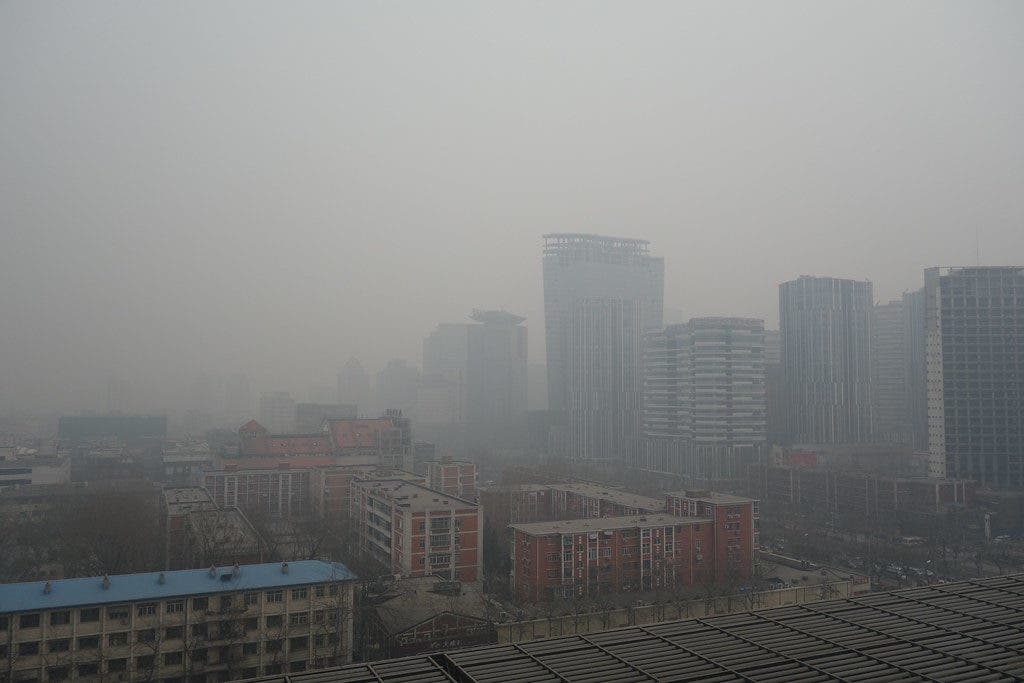China, the world’s largest carbon emitter today, is on track to meet its climate change goals. This is in part due to emissions from its power plants declining strongly between 2014 and 2017, according to a new study.

Emissions are not only a problem in China because of global warming but also due to air pollution, with many cities having difficulties with their air quality. Now, with cleaner energy, this could soon change — and China is undergoing serious efforts to ensure a timely transition.
Experts from the UK and China looked at the emissions from coal, oil, natural gas, and biomass power plants, with a focus on coal-fired power plants as the major contributors to ambient air pollution.
The study, published in Nature Energy, specifically looked at data from 2014, the year when introduced the ambitious Ultra-Low Emissions (ULE) Standards Policy for renovating coal-fired power stations to limit air pollutant emissions, to 2017.
According to the results, the team discovered that between 2014 and 2017, China’s annual power plant emissions of sulfur dioxide, nitrogen oxide and particulate matter dropped by 65%, 60% and 72% each year respectively:from 2.21, 3.11 and 0.52 million tonnes in 2014 to 0.77, 1.26 and 0.14 million tonnes in 2017.
The numbers are in compliance with China’s ULE standards, putting the country on track to further reduce its emissions if all thermal power plants meet the ULE standards by 2020. These standards aim to limit the sulfur dioxide, nitrogen oxide and particulate matter emissions to 35, 50 and 10 milligrams per cubic meter respectively.
“This is encouraging news for China, as well as other countries wishing to reduce their power emissions. Thermal power plants combusting coal, oil, natural gas, and biomass are one of the major contributors to global air pollution,” said UCL co-author Dr Zhifu Mi.
Previous methods of estimating Chinese power emissions overestimated numbers by at least 18%, and in some cases up to 92%, the study showed. This is because they were carried out using estimations made ahead of the introduction of ULE standards, which looked at how the standards might affect emissions based on assumptions of changes in emission concentrations.
This was the first study to use data on emission concentrations collected by China’s Continuous Emission Monitoring Systems network (CEMS) which covers 96-98% of Chinese thermal power capacity.
“These significant emission reductions demonstrate the technical and economic feasibility of controlling emissions from power plants to reach ultra-low levels, which is an important step towards reducing the number of deaths attributable to air pollution,” said Dr Mi.
As part of their work, the team built a nationwide emissions dataset – the China Emissions Accounts for Power Plants (CEAP) – based on data collected from the CEMS network between 2014 and 2017. CEAP is now publicly available and continues to present, organize and analyze data from the network.
“With coal being the most widely-used fuel in China, cutting the number of thermal power plants within a short timeframe would be challenging. The results of this research are encouraging in demonstrating that coal can be used in a much cleaner way to generate electricity,” concluded Dr Mi.
However, when it comes to its Paris Agreement pledges, China’s current progress is ‘Highly Insufficient.’ Discouragingly, China started construction of 28 GW of new coal-fired power capacity in 2018 after a previous construction ban was lifted, bringing its total coal capacity under construction to 235 GW. Although renewable energy is surging in China, this hasn’t truly stopped the development of new fossil fuel plants — paradoxically, China is the world’s largest consumer of coal and the world’s largest producer of renewable energy.
China’s contribution is not ambitious enough to limit warming to below 2°C, let alone to 1.5°C as required under the Paris Agreement. There is significant progress in the world’s most populous country, but there is much more that needs to be done — and it needs to be done soon.


